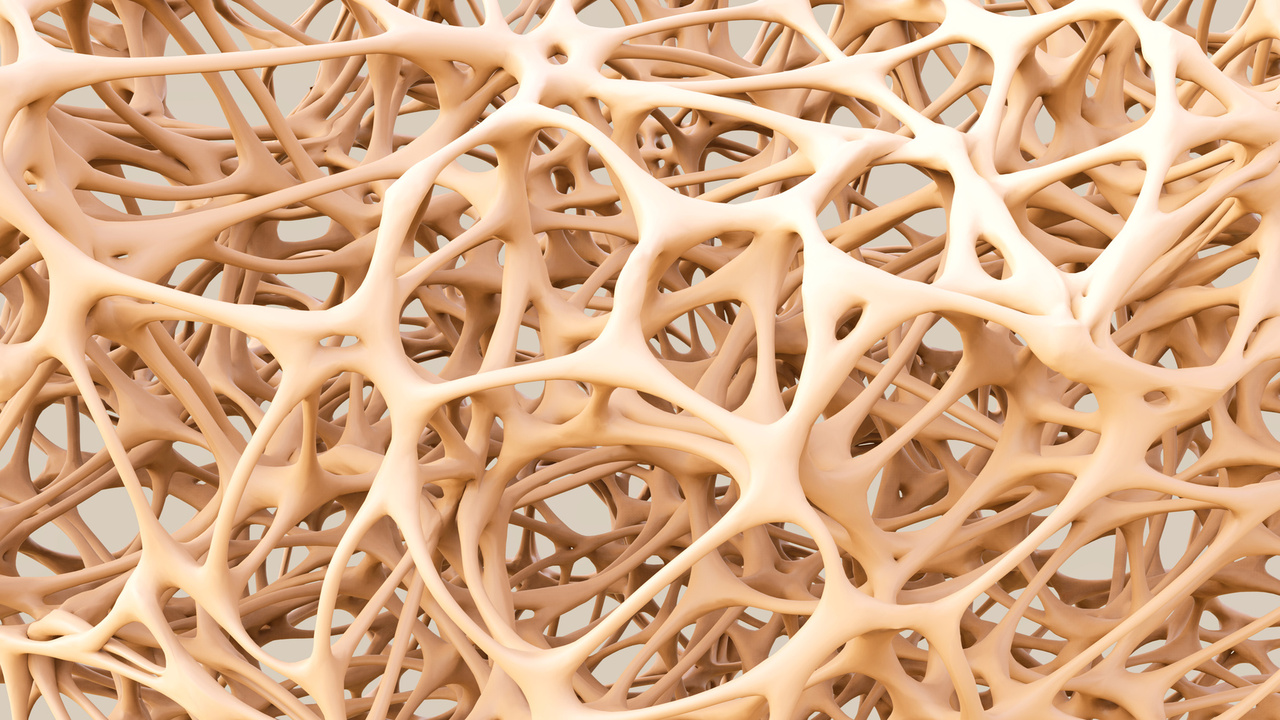Osteoporosis, which means porous bones, is most commonly caused by low levels of calcium and minerals in the bones. The bones become so weak and brittle that even the mild stress of bending over can cause a bone fracture. Keeping bones healthy with a diet rich in calcium, vitamin D and protein can prevent this debilitating condition.
Milk
Milk is a good source of both calcium and vitamin D. Calcium is an essential mineral needed to maintain healthy bones. Vitamin D is a fat-soluble vitamin necessary for calcium absorption. There is not a naturally high concentration of vitamin D in most foods, so you will need to look for products that are fortified with it.
Canned Salmon and Sardines
Canned salmon and sardines with bones are two sources of calcium. The delicate and edible bones that are present in these packed fish are rich in calcium and magnesium. One 3.5 ounce serving contains two-third of the amount of calcium in one cup of milk.
Cheese
Calcium is deposited and withdrawn from bones daily. Bones continue to build up to the age of 30. A good source of calcium is cheese. During the adolescent growth spurt years, the daily recommendation is 1,300 mg of calcium. An easy way to achieve this goal is to have three 8 ounce servings of dairy. One and a half ounces of natural cheese or two ounces of processed cheese count as one serving.
Green Leafy Vegetables and Broccoli
Kale, collards, turnip and mustard greens join broccoli as foods which are good sources of calcium. One cup of turnip greens is packed with 190 mg of calcium while a similar serving of kale follows at 135 mg. Broccoli does not have as high a concentration. But this can be enhanced by adding an ounce or two of cheese to one cup of steamed broccoli.
Tuna
Tuna canned in water is a source of both calcium and vitamin D. A can of tuna contains 14 mg of calcium and 80 IU of vitamin D. It is also a convenient source of protein, a nutrient important for bone health. As we age, our daily requirement for vitamin D increases. By the age of 50, a person’s daily need doubles from 200 IU to 400 IU.
Fortified Cereals
Cereals that are fortified with calcium and vitamin D are another food product to help build strong bones and prevent osteoporosis. The nutrition facts label on cereal packages list the daily value or recommended daily allowance of nutrients in that product. One cup of plain oatmeal that is not fortified has 4 percent of the daily value while the same amount of a fortified oatmeal has 10 percent of the daily value for calcium.
Yogurt
One cup of yogurt provides 30 percent of the daily value for calcium. This is the equivalent of one cup of milk. Fat-free or low-fat yogurt provide about the same amount of calcium as whole milk yogurt but with less fat.
Lentils
Beans such as lentils are a good source of protein, iron and calcium. One cup of uncooked lentils provides 11 percent of the daily value of calcium. A quick bean burrito made with a can of low-fat refried beans, shredded cheese, corn tortillas and salsa or guacamole is a tasty way to get protein and calcium.
Almonds
Almonds are a very good source of protein. One quarter of a cup of almonds has as much protein as one egg and 14 percent of the daily value of calcium. Other nuts that are sources of both protein and calcium are Brazil nuts, cashews, pecans. pistachios, and macadamias.
Sesame and Sunflower Seeds
Sesame and sunflower seeds are two good sources of protein and calcium. Whole seeds can be added to a stir-fry dish. Tahini, which is sesame seed paste, is an ingredient in hummus. Sunflower seeds can be added to breads or sprinkled over salads and cereal.





Add a CommentComments
There are no comments yet. Be the first one and get the conversation started!